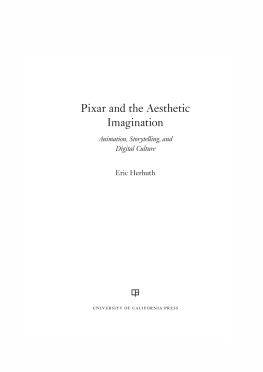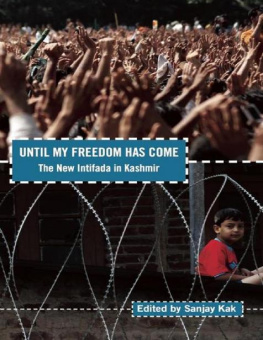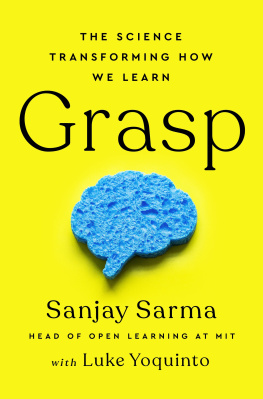
Sanjay Patel, digital


Sanjay Patel and Chris Sasaki, pen and marker
Copyright 2015 Disney Enterprises, Inc and Pixar Animation Studios. All rights reserved. No part of this book may be reproduced in any form without written permission from the publisher.
ISBN: 978-1-4521-5206-6 (hc)
ISBN: 978-1-4521-5278-3 (epub, mobi)
Designed by Liam Flanagan
Chronicle Books LLC
680 Second Street
San Francisco, California 94107
www.chroniclebooks.com


Chris Sasaki, pen and pencil

Sanjay Patel, colored pencil, pen, and watercolor
Foreword
JOHN LASSETER
F or many years, Sanjay Patel has given dimension and life to Pixars characters as both an animator and a storyboard artist. At the studio, he helped superheroes fight their way off of island fortresses, taught monsters about scream canisters, and helped toys remind other toys of whats really important in life. Outside the studio, he was refining his exquisite sense of design, creating gorgeous, incredibly appealing illustrations for his stories of Hindu gods and heroes. Two years ago we asked Sanjay to combine these talents and start thinking about ideas for a short film. We were very excited at the prospect of seeing his unique sensibility brought to life on screen.
Sanjay came to us with several great ideas. But the story he told that touched me the most was the one that was the most personal. He talked about growing up with his father, watching his father pray at the altar in their living room as he himself sat across the room in front of the television, watching Saturday morning cartoons. As Sanjay jokingly put it, each of them was practicing his own form of devotion.
Like many of the best stories, it was both very personal and universally relatable. The parents and children in a family are often interested in very different things, and the generational divide can sometimes seem insurmountable at first. But if youre lucky, and both sides are willing to take the time to understand each other, you often find that the roots of seemingly different passions come from the same place. In this way, differences within a family can actually be the catalyst for a much greater closeness than you would ever have expected.
Visually, Sanjays Super Team ranges from some of the most fantastical, stylized imagery weve ever done at the studio, to the most literal and personal the photographs of Sanjay and his father in the end credits. Because this is the most personal telling of someones life we have ever made, it seemed only fitting to specially acknowledge the storys roots.
Im very excited we can share the beautiful art of this short filmand the beautiful story behind itwith you in this book.

Chris Sasaki, digital
Preface
CHRIS SASAKI
I remember the day I first learned about the project that would eventually become the short film called Sanjays Super Team. I had only met Sanjay once or twice, but I knew his work and was a fan. The tiny room where we met to discuss his project was filled to the brim with images. Photographs of Indian temples and sculptures mingled with storyboards and cartoon superheroes. Sanjay pitched me a very early version of the film, which he had storyboarded himself, and I was instantly hooked. I found myself holding back tears as I realized the film echoed parts of my own childhood experiences as an Asian American. I felt the story came from something true and honest, and I wanted to be a part of it.
After his pitch, Sanjay gestured toward the temple photographs on the wall and flipped through the reference books on the table, explaining that every detail had a purpose and a story. Look, he said, I cant expect you to know everything. But I need you to understand how important it is to preserve and give tribute to this mythology and culture. For a first-time production designer, this was a daunting task. Indian culture is vast and ancient. The visual scope of our film was ambitious. The narrative was extremely personal. And everything needed to fit neatly into less than eight minutes of screen time.
Critical challenges appeared at every turn, but the film was a true privilege to work on. The world of Sanjays Super Team blends so many exciting elementstraditional 2D and 3D animation, alternate realities, ancient temples, deities, cosmic action sequenceswith a contemporary story about family, identity, and tradition. Visually, we wanted to integrate the ancient themes with a modern perspective. Each design decision, from props to color, was made through the lens of Sanjays personal story and cultural narrative.
The ideal environment for filmmaking is one of discovery, and Sanjays Super Team provided that in spades. I realize now that my childhood education offered very little exposure to Indian culture and mythology. I am grateful to have learned so much more about it through the making of the film. This journey would not have been possible without the collaborative efforts of our amazing crew. Our team was small, which meant that each stage of production required crucial contributions from individuals. Technical artists, animators, and designers all came together to make something compelling and new. I hope those who see the film, and who flip through these pages, can share in the inspired experience we had while making it.

Paul Abadilla, digital
Introduction
FINDING MY SUPER TEAM
A fter seventeen years at Pixar I had reached a crossroads. Id spent the last ten years working by day as an animator and storyboard artist. Then, by night, I wrote and illustrated picture books. I knew I couldnt keep doing both jobs. My focus was split and it was beginning to show. Something had to give.
This time of dual careers started while I was storyboarding on The Incredibles. A group of us at the studio decided to self-publish comics under the moniker Afterwerks. My effort wasnt exactly a comic bookit was a picture-book glossary of Hindu gods with short descriptions of their mythology called Little India. It immediately struck a chord with fans. Suddenly I had a second job creating and selling books, prints, and T-shirts. Eventually, I began working with museums, publishers, and teachers who were all clamoring for the same thing: an accessible introduction to Hindu mythology.
After ten years of this I was feeling burnt out and in need of a changeI decided it was time to focus on my personal work. Once I announced my intentions to leave, however, the president of Pixar pitched an idea that I had never really considered. He sat me down and asked me if Id like to develop a short. I told him that I wanted to tell stories from my parents culture, but that they didnt seem compatible with the Pixar brand. To my surprise, he said that something different was exactly what the studio should be doing. He added the caveat, You wont get your vision entirely. If you can live with some compromise, then we can help tell your story. I was stunned that they were willing to explore mythological material. As for the notion of directing something at Pixar, well, that just stirred up so much fear within me. I felt safe developing my personal work in private, and having free rein to explore ideas according to my taste. I knew the story and filmmaking process at Pixar could be brutal, with everyone trying to tear down your material in order to rebuild it in a better way. It was scary to think of opening myself up to this process with work that was, well, personal. It seemed risky to mix the two worlds together. After much thought and many conversations with friends and colleagues, ultimately what tipped my hand toward undertaking a short film project with the studio was a conversation I had with my dad. He said that the company had taken care of me for nearly twenty years, and to walk away without attempting to do what they were asking would be bad. He said my duty was to try. And with that my two jobs became one.
Next page

















